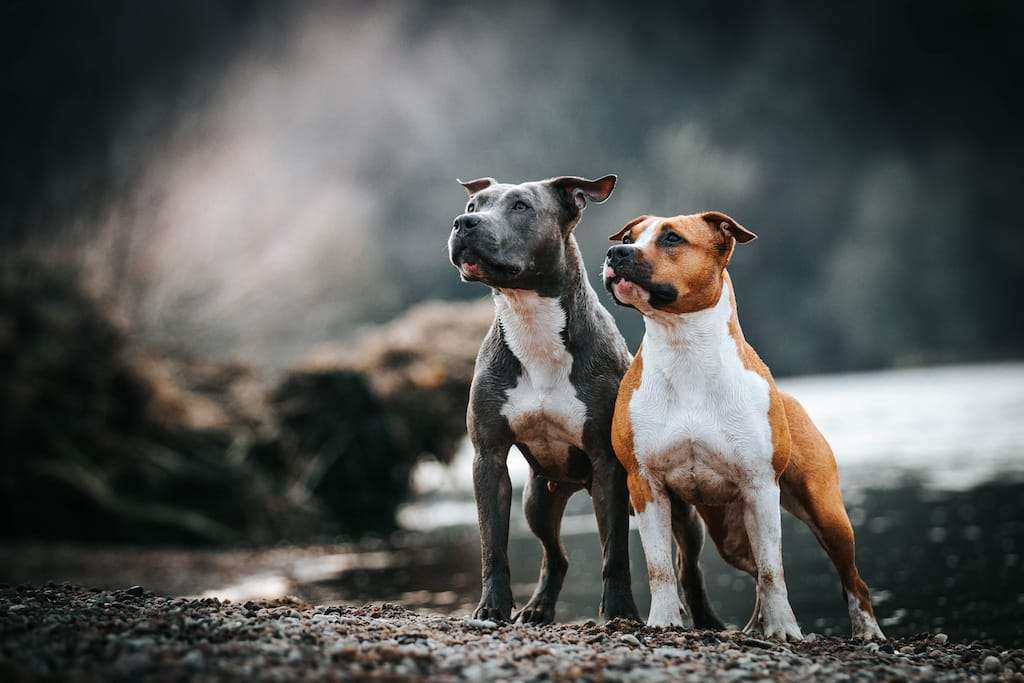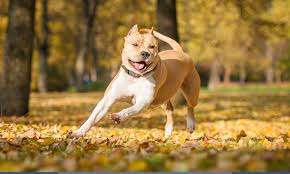The American Staffordshire Terrier, affectionately known as the AmStaff, is a muscular, medium-sized dog with a reputation for loyalty, courage, and affection. This guide explores history, temperament, health considerations, care, training, legal issues, and much more to help you decide if this breed is the right fit for your family.

🧬 Origins & History
Descended from 18th–19th century English Bulldog-Terrier crosses, bred for bull-baiting, guarding, and farm work. In the United States, the breed was refined for a more companionable temperament, ultimately becoming the American Staffordshire Terrier. In 1936, the American Kennel Club formally recognized this breed. The name changed in 1969 to distinguish it from the Staffordshire Bull Terrier in the UK.
Learn more about: Can dogs eat avocado
Played notable roles in history, including war mascots, advertising figures, and beloved companions.
🧠 Temperament & Personality
Deeply devoted and loving, this breed builds strong emotional connections with it is family members.
- Courageous, confident, and alert, making them excellent watchdogs.
- Friendly with humans but may be dog-selective, requiring early socialization.
- Known to be playful and gentle with children when raised in a stable, supervised environment.
- Not naturally aggressive but protective and territorial.
- Sensitive to their owner’s moods and eager to please.
📏 Size, Appearance & Coat
- Height: 17–19 inches (males), 17–18 inches (females)
- Weight: 40–70 pounds
- Build: Strong, muscular, and athletic with a broad head and deep chest.
- Coat: Short, stiff, and glossy.
- Colors: Brindle, black, blue, fawn, red, brown, and combinations with white markings. Merle is not accepted by AKC standards.
Minimal grooming needs but sheds seasonally.
🏃♀️ Exercise & Activity Needs
- Needs at least 1 to 1.5 hours of daily exercise to stay healthy and prevent unwanted behaviors.
- Enjoys running, hiking, tug-of-war, fetch, and agility training.
- Mental stimulation is just as crucial, puzzle toys, obedience games, and trick training keep them sharp.
- With enough daily exercise, they can comfortably live in an apartment setting.
🩺 Health & Common Issues
- Life Expectancy: 12–16 years
- While typically healthy, this breed may be susceptible to a few specific health issues:
- Hip and elbow dysplasia
- Progressive retinal atrophy (PRA)
- Hypothyroidism
- Cerebellar ataxia (genetic neurological disease)
- Skin allergies (food or environmental)
- Heart disease (particularly congenital heart defects)
Routine veterinary care, balanced nutrition, and support for joint health help enhance their overall well-being.
🧼 Grooming & Maintenance
- Low-maintenance coat: Weekly brushing keeps their coat healthy and reduces shedding.
- Bathe only when needed, usually once every few months unless they get dirty.
- Clean ears weekly, brush teeth 2–3 times per week, and trim nails monthly.
- Monitor skin for allergic reactions or hot spots.
🍽️ Feeding & Nutrition
- Feed a high-protein, nutrient-rich diet designed for medium-to-large, active breeds.
- Puppies: 3–4 small meals daily until 6 months, then transition to twice-daily feeding.
- Adults: 2 balanced meals per day.
- Senior dogs may require fewer calories and joint support nutrients.
- Avoid overfeeding, as obesity can stress joints and trigger other health issues.
🎓 Training & Socialization
- Intelligent and eager to learn, but can be strong-willed.
- Early training combined with positive reinforcement tends to produce the most effective outcomes.
- Essential to socialize with people, other dogs, sounds, and environments during puppyhood.
- Commands like leave it, stay, and good leash manners are important due to their strength.
- Crate training helps with housebreaking and managing alone time.
- Not ideal for first-time owners without prior training experience.
👨👩👧👦 Family Compatibility
- They make wonderful family pets, especially for those who lead active lives.
- Loyal and protective, can be a great family guardian.
- Best suited for families with older children.
- It is important to supervise their interactions with young children and other pets.
- May chase small animals like squirrels or cats due to prey drive.
- When meeting other dogs, proceed with caution as some American Staffordshire Terriers may show selectiveness.
⚖️ Breed-Specific Legislation (BSL)
- Often categorized under pit bull-type breeds, leading to bans or restrictions in some regions.
- Restrictions may include:
- Breed bans
- Muzzle requirements
- Special insurance
- Mandatory registration
- Always check local laws before adopting or moving with an AmStaff.
- Advocacy and responsible ownership are essential to change public perception.
✈️ Travel & Living Considerations
- Travel-friendly if crate trained; however, some airlines restrict pit bull-type breeds.
- Pet-friendly housing may have breed exclusions; check before signing leases.
- Needs durable toys and secure fencing due to strength and prey drive.
✅ Pros & Cons
Pros
- Loving, loyal, and family-oriented
- Low grooming requirements
- Intelligent and easy to train
- Protective without excessive barking
Cons
- May be aggressive toward other dogs
- Needs lots of mental and physical stimulation
- Can develop separation anxiety if left alone long
- Banned or restricted in some areas
❓ Frequently Asked Questions (FAQs)
No, not inherently. Proper socialization and training help them grow into affectionate and loyal pets. Aggression is often a result of poor upbringing or mistreatment.
Yes, ,with supervision. They are playful and affectionate but should be monitored around toddlers due to their strength.
Pit Bull is a category, not a breed. American Staffordshire Terriers belong to the pit bull group but are distinguished by a well-defined temperament and build, officially recognized by the AKC.
Generally quiet. They may bark to alert or when bored, but they’re not excessive barkers.
Depends on early socialization. Some do well with dogs they were raised with, but dog aggression can appear
📝 Final Thoughts
The American Staffordshire Terrier is a loyal, courageous, and affectionate dog best suited for experienced owners who can provide structure, training, and lots of love. When given appropriate socialization, an AmStaff can become a wonderful companion and cherished member of the family.
Before bringing one home, always check local breed-specific laws, research reputable breeders or adopt from a trusted rescue, and commit to responsible ownership. The bond you’ll form with an AmStaff is one of loyalty, trust, and lifelong friendship.

